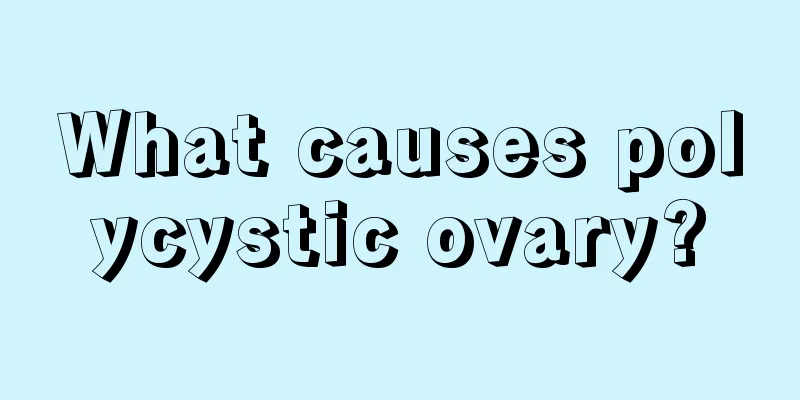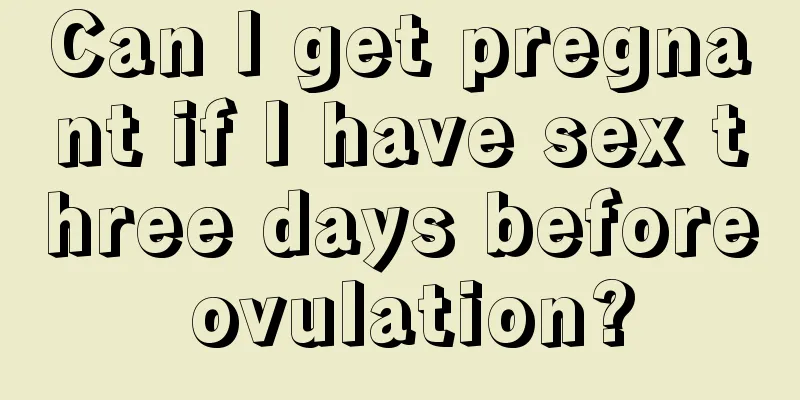What causes polycystic ovary?

|
I believe everyone is familiar with polycystic ovary, which is a gynecological disease that occurs in women. Clinically, polycystic ovary syndrome has different classifications, from type 1 to type 4. Different types of polycystic ovary syndrome will cause different symptoms in patients, but in general, the patient’s menstruation will be disordered, accompanied by hair loss and poor skin, etc. So what are the causes of polycystic ovary syndrome? What causes polycystic ovary? Ovarian cyst is a common disease in women, usually caused by endocrine disorders or metabolic abnormalities in the body. Ovarian cysts are usually multiple cysts, called polycystic ovaries, which are more common in women of childbearing age. Next, let’s learn about what causes polycystic ovary. What causes polycystic ovary? The cause of polycystic ovary is still unclear. Generally speaking, this type of disease is a congenital multi-gene disease and is also closely related to later lifestyle. For example, long-term consumption of high-calorie or high-fat diets, lack of exercise, and high blood lipids and blood sugar may induce symptoms of polycystic ovary. In addition, the vicious cycle causes the symptoms of polycystic ovary to gradually worsen. In terms of treatment, it is necessary to break the vicious cycle and control the disease through lifestyle changes. Clinical manifestations of polycystic ovary 1. Menstrual disorders. The main clinical manifestations are amenorrhea, oligomenorrhea and functional uterine bleeding, accounting for 70% to 80% of women with abnormal menstruation, 30% of secondary amenorrhea, and 85% of anovulatory functional uterine bleeding. Due to the patient's ovulatory dysfunction and lack of cyclical progesterone secretion, the endometrium is under simple high estrogen stimulation for a long time. Continuous endometrial hyperplasia is prone to simple endometrial hyperplasia, abnormal hyperplasia, and even atypical endometrial hyperplasia and endometrial cancer. 2. Clinical manifestations related to hyperandrogenism. For example, hirsutism, hyperandrogenic acne, female pattern hair loss (FPA), seborrhea and masculinization, etc. 3. Polycystic ovary (PCO). Although a lot of research has been done on the ultrasound diagnostic criteria for PCO, there are still many different opinions. In addition, racial differences make it even more difficult to unify the diagnostic criteria. 4. Other manifestations. For example, obesity, infertility, obstructive sleep apnea, and depression. Therefore, the cause of polycystic ovary is still unclear, but congenital factors and acquired lifestyle have a great relationship with the onset of this disease. If you suffer from polycystic ovary, it is recommended to go to the hospital in time to receive regular treatment. In addition, you should pay attention to the regularity and health of your lifestyle. |
<<: What are the early symptoms of polycystic ovary?
>>: Ovarian pain, what's going on?
Recommend
What is the cause of women's inverted nipples and how to treat them
Nowadays, women's breasts are a symbol of bea...
What is an ovarian tumor?
Ovarian tumor is a tumor disease with a very high...
What supplements to take after abortion
Flow It is a behavior that is very harmful to wom...
Nursing methods for women with different blood types
Girls with blood type A Girls with type A blood h...
Which episode of Happy Camp are Victoria Song and Song Weilong in? When will Victoria Song and Song Weilong be on Happy Camp?
A long time ago, Victoria Song and Song Weilong p...
When is the best time to lose weight after childbirth?
When women are pregnant, they usually do it for t...
How much does early Down syndrome screening cost?
Down syndrome (DS), also known as trisomy 21 or c...
What can I eat to promote milk secretion?
Many pregnant women will feel blockage in their b...
How to remedy the cold during confinement?
During the confinement period, mothers need to ta...
Causes of abdominal bloating during menstruation
For women, the menstrual period is a very critica...
5 ways to wear underwear that hurt women's breasts the most
Lingerie is the most playful expression of a woma...
What are the benefits and effects of Narcissus tea? What types of Narcissus tea are there?
Narcissus tea is a famous tea created by tea farm...
What are the symptoms of poor ovarian function?
Poor ovarian function brings many adverse effects...
Will cervical erosion recur after surgery?
In fact, women do not have to worry too much afte...
Does taking Euthyrox during pregnancy have any effect on the fetus?
When a girl experiences her first pregnancy, her ...









